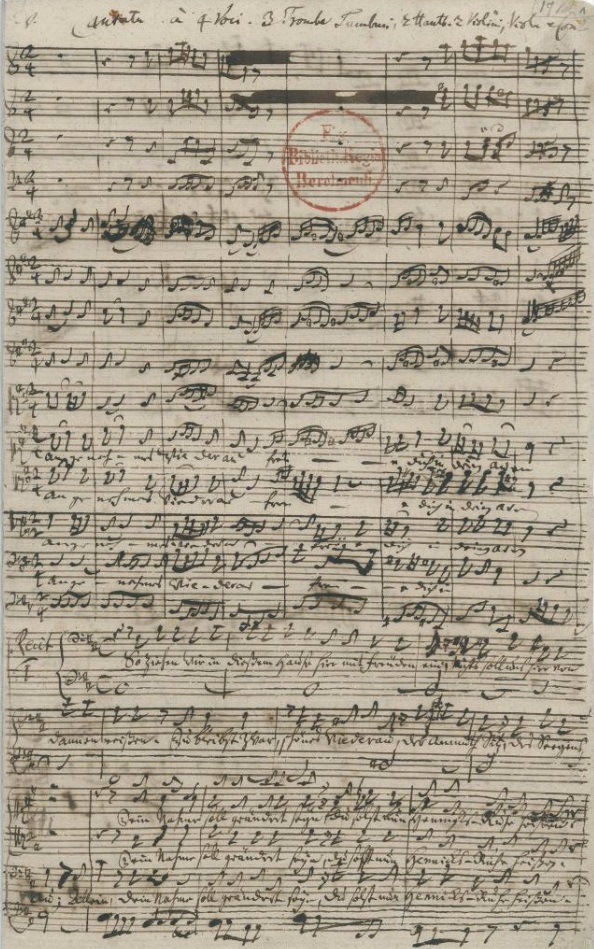Bach, Johann Sebastian, 1685-1750. Freue dich, erloste Schar
Enlarge text Shrink text- His Freue dich, erloste Schar, 1984, c1982.
- Schmieder(30; Freue dich, erloste Schar; Kantate am Feste Johannis des Taufers)
- Bach, J.S. BWV 112, Der Herr ist mein getreuer Hirt ... [SR] p1985:surrogate booklet (BWV 30, Joyful be, O ransomed throng)
- His Kantate Nr. 30 am Feste Johannis des Taufers, "Freue dich, erloste Schar" = Cantata no. 30 for the festival of St. John the Baptist, "Come, rejoice ye faithful, come," c1937:surrogate t.p.
- Schmieder, 1990(30. Freue dich, erloste Schar; Kantate am Fest Johannis des Taufers (Festo S. Joannis Baptistae))
Freue dich, erlöste Schar (Rejoice, redeemed flock), BWV 30.2, BWV 30, is a church cantata by Johann Sebastian Bach. It is one of his later realisations in the genre: he composed it for the Feast of John the Baptist (24 June) in 1738, and based its music largely on Angenehmes Wiederau, a secular cantata which he had composed a year earlier. Christian Friedrich Henrici (Picander), the librettist of the secular model of the cantata, is likely also the author of the sacred cantata's version of the text. The cantata's outer choral movements, and its four arias, are parodied from the secular work. Bach recomposed the five recitatives, and added a chorale as conclusion of the first half of the cantata. The cantata is scored for soprano, alto, tenor and bass singers, woodwinds, strings, and continuo. While the earlier composition had also trumpets and timpani in its outer movements, Bach did not copy these parts in his autograph score of the sacred version of the work. Later it was suggested, likely not by the composer, that these parts could be added ad libitum. The 19th-century publication of the cantata by the Bach Gesellschaft (Bach-Gesellschaft Ausgabe, BGA) included these parts in the printed score.
Read more on Wikipedia >
 Title
Title




